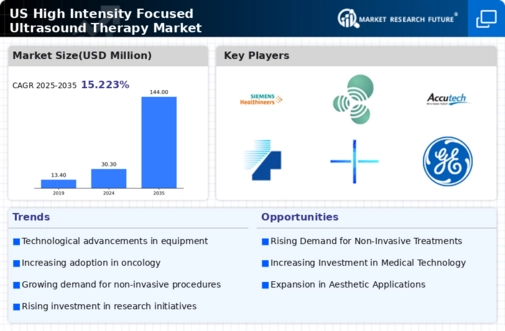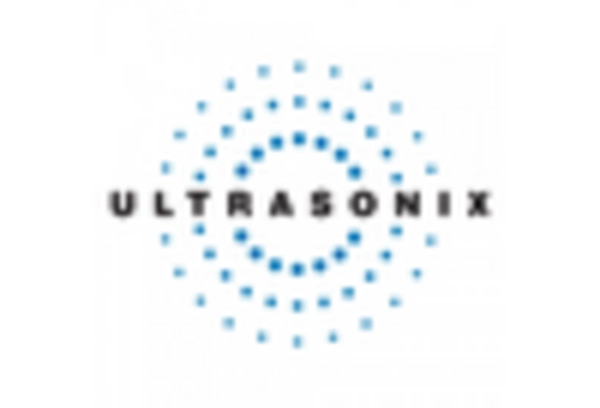Supportive Reimbursement Policies
Supportive reimbursement policies are emerging as a key driver for the high intensity-focused-ultrasound-therapy market. As insurance providers increasingly recognize the efficacy and cost-effectiveness of high intensity-focused ultrasound therapy, more patients gain access to these treatments. This trend is particularly relevant in the context of outpatient procedures, where reimbursement rates can significantly influence patient choices. Recent policy changes have led to broader coverage for high intensity-focused ultrasound therapy, making it a more viable option for patients. As reimbursement frameworks continue to evolve, the market is expected to benefit from increased patient uptake and provider adoption, potentially leading to a market growth rate of around 12% annually.
Increasing Prevalence of Chronic Diseases
The high intensity-focused-ultrasound-therapy market is significantly influenced by the rising prevalence of chronic diseases, such as cancer and cardiovascular disorders. As these conditions become more common, the demand for effective treatment modalities escalates. High intensity-focused ultrasound therapy presents a promising option for managing these diseases, offering targeted treatment with minimal side effects. The American Cancer Society reports that nearly 1.9 million new cancer cases are expected in the US in 2025, underscoring the urgent need for innovative therapies. Consequently, the high intensity-focused-ultrasound-therapy market is likely to expand as healthcare systems seek to incorporate advanced treatment options to address this growing health crisis.
Rising Demand for Non-Invasive Treatments
The high intensity-focused-ultrasound-therapy market is experiencing a notable increase in demand for non-invasive treatment options. Patients are increasingly seeking alternatives to traditional surgical procedures due to the associated risks and recovery times. This trend is particularly evident in the treatment of various conditions, including tumors and fibroids, where high intensity-focused ultrasound therapy offers a less invasive solution. According to recent data, the market is projected to grow at a CAGR of approximately 15% over the next five years, driven by this shift in patient preferences. As healthcare providers adopt these innovative therapies, the high intensity-focused-ultrasound-therapy market is likely to expand significantly, catering to a growing population that prioritizes minimally invasive options.
Advancements in Medical Imaging Technologies
The integration of advanced medical imaging technologies is playing a crucial role in the high intensity-focused-ultrasound-therapy market. Enhanced imaging techniques, such as MRI and ultrasound, allow for precise targeting of tissues, improving treatment efficacy and safety. This technological synergy not only facilitates better patient outcomes but also boosts the confidence of healthcare professionals in utilizing high intensity-focused ultrasound therapy. As imaging technologies continue to evolve, the market is expected to witness a surge in adoption rates. Recent estimates suggest that the market could reach a valuation of $1 billion by 2027, reflecting the growing reliance on sophisticated imaging solutions in therapeutic applications.
Growing Investment in Healthcare Infrastructure
The high intensity-focused-ultrasound-therapy market is poised for growth due to increasing investments in healthcare infrastructure across the US. As hospitals and clinics upgrade their facilities and technology, the adoption of high intensity-focused ultrasound therapy is likely to rise. Enhanced infrastructure not only supports the implementation of advanced treatment modalities but also improves patient access to these therapies. According to the American Hospital Association, healthcare spending is projected to reach $6 trillion by 2027, indicating a robust commitment to enhancing healthcare delivery. This investment climate is expected to foster innovation and expansion within the high intensity-focused-ultrasound-therapy market, ultimately benefiting patients and providers alike.

















Leave a Comment